| Dan McCabe |
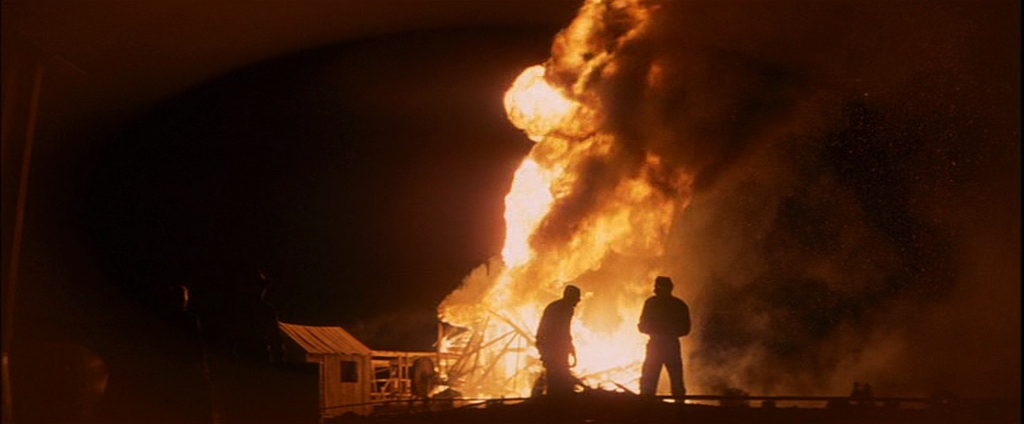
An oil well inferno in Paul Thomas Anderson’s There Will Be Blood (2007)
There Will Be Blood plays on glorious 35mm at the Trylon Cinema from Thursday, March 27th, through Tuesday, April 1st. No joke! For tickets, showtimes, and other series information, visit trylon.org.
For better or worse, the Western is the quintessential American myth from its beginnings with The Great Train Robbery (1903) through the films of John Ford, Sergio Leone, and Clint Eastwood. During the Western’s heyday in the first half of the 1900s, the nineteenth century was still in living memory. Older members in the audience who attended the inaugural release of John Ford’s Stagecoach (1939), for example, may have gone to a Buffalo Bill Cody show or have been cowboys themselves. While there are undeniable, pantheon-dwelling classics in the genre, many of the old Westerns remain in the dust of Monument Valley for formulaic storytelling, glamorizing atrocities, and popularizing the lies people of the twentieth century told themselves about the previous one.
So where does that leave the Western in the modern day? The answers can be found in Paul Thomas Anderson’s There Will Be Blood, one of the finest films released so far in our current century. Anderson’s film, and Daniel Day-Lewis’s performance as oil prospector Daniel Plainview, create an important argument for the Western genre. But they don’t necessarily do it in a way that either dwells in or responds to the older films in the genre. Instead, they use the Western milieu to tell a story about corrosive greed and delusions of grandeur.
Note: I’m now getting into plot points from There Will Be Blood. If you haven’t seen it before, this is your warning.
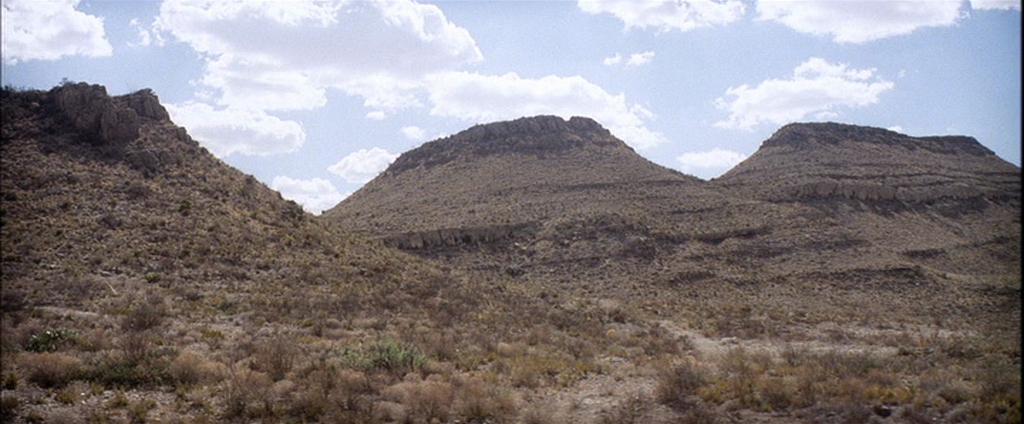
An example of magnificent western scenery in There Will Be Blood
Structurally, There Will Be Blood uses familiar building blocks from the Western genre. The cinematography contains magnificent vistas, although Anderson drains them of color to give the film a foreboding look. The costumes look like something out of a daguerreotype, especially since most of the characters dress in black, white, and gray. Horses, trains, and a sea of barren dirt complete the effect, giving the audience images that could be a black and white Western from 1935 just as well as a color film from 2007.
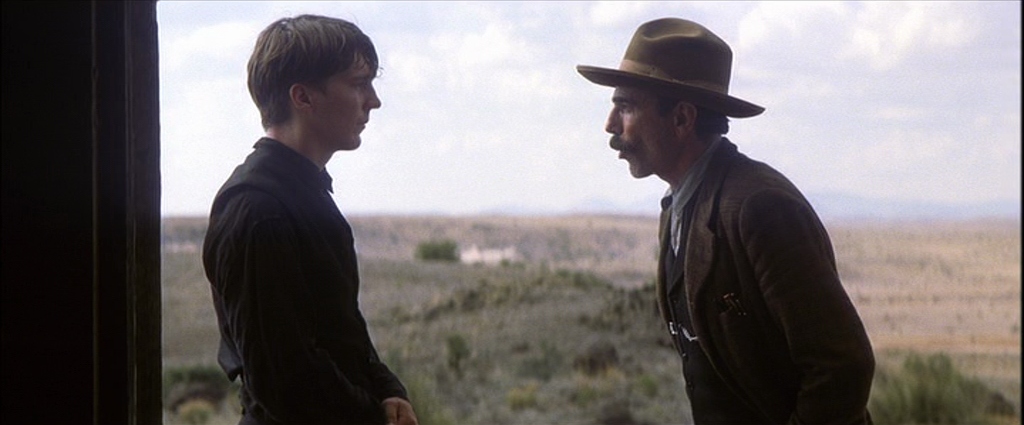
Paul Dano and Daniel Day-Lewis as Eli Sunday and Daniel Plainview in There Will Be Blood. The actors wear black, grey, and brown costumes most of the film.
What Anderson populates this world with is not a tale of the American myth of a rugged individual taming the wild land. The story of There Will Be Blood comes from the darker soul of that myth, where grit and determination morph into a relentless hunger to take your fortune by any means necessary. There’s a whole ocean of oil under Daniel Plainview’s feet, and not even a little boy getting his eardrum blown out is going to stop him from taking it.
There is no John Wayne or Gary Cooper character to come along and give Daniel Plainview his comeuppance, as if any such figures ever could. Day-Lewis plays Plainview as relentlessly as a hurricane. A cowboy or sheriff standing up for honor, duty, and all that jazz? Plainview would drink them up like his proverbial milkshake.
While Paul Thomas Anderson is a visionary director, it is the casting of Daniel Day-Lewis that makes There Will Be Blood exceptional. Indeed, one cannot overstate Day-Lewis’s skill as he disappears into a role, creating memorable and realistic characters. Daniel Plainview is no exception—what could be a one-dimensional mustache-twirler in lesser hands becomes the embodiment of corrosive nature of greed in his.
Take the scene where Plainview finds out that “Henry” (Kevin J. O’Connor) is not really Plainview’s half-brother, but an anonymous drifter. He brutally murders Henry, and a group of men find him shortly thereafter. Now, in the old Westerns, this would be when Plainview gets his deserved end, when the townspeople rise up against him and run him out of town. Instead, Plainview gets exactly what he wants, an easement to build an oil pipeline, and only has to endure temporary humiliation. His supposed “punishment” does nothing to stop Plainview from building his wealth and power.
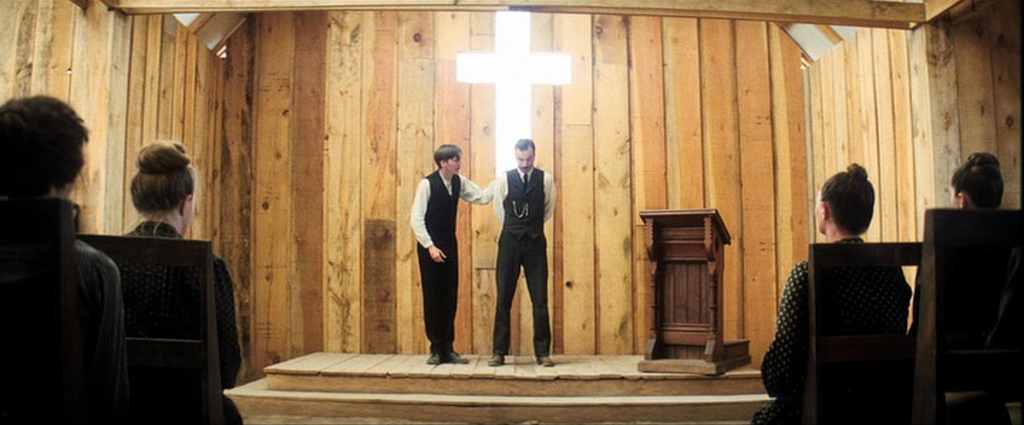
To Eli Sunday, Daniel Plainview’s confession in church is a victory, but to Plainview, it is merely a temporary nuisance in his way to building an oil pipeline.
By the end of the film, Plainview lives alone in a mansion, slowly drinking himself to death, abandoned by his adopted son H.W. (who wisely disowns Plainview). Even when, in a drunken rage, he murders Eli (Paul Dano), one can easily imagine a world where he gets away with it. We don’t see what happens next because Anderson cuts to black, but it would entirely be consistent with the film if Plainview and his goons cleaned up the mess, disposed of the body, and carried on.
I think that’s what sets apart modern Westerns from the old Westerns. In the old films, events external to the characters often drive the story. In a story such as this, a third force would have destroyed Daniel Plainview. We can see that in such classics as The Man Who Shot Liberty Valance (1962) and High Noon (1952), where justice is dispensed at the hands of a righteous gunman.
There’s an interiority missing in those films that is very much present in Paul Thomas Anderson’s. Through his performance, Daniel Day-Lewis gives the audience a view into a horrible man’s psyche. We see this Daniel Plainview become increasingly monstrous as the film progresses. His actions in the name of greed and empire-building slowly tear away at his soul until, at the end of the film, there is nothing left but a husk of a man sucking down a bottle and committing acts of violence.
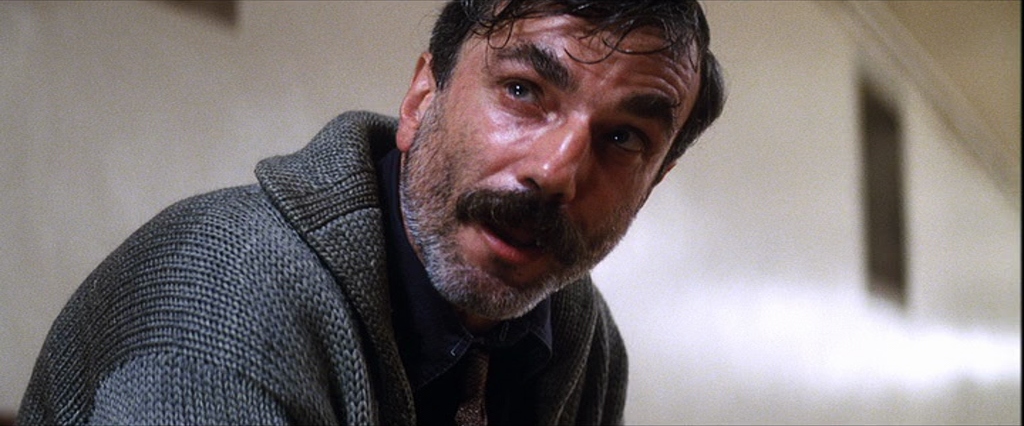
Daniel Plainview at the end of There Will Be Blood: drunk, insane, and obscenely rich.
Of course, if you asked Daniel Plainview, he would claim to be like those heroes of the old Westerns, making his way through the land of opportunity. What we can see is a man who destroyed everything in his path to make that way.
There Will Be Blood demonstrates that there is still good reason to return to the Western to tell new stories that don’t rely on established formula, tradition, and in some cases, living memory. In this case, instead of the well-worn morality play, or a commentary on that form, Paul Thomas Anderson gives us a character study detailed enough to rival tales from written fiction. In fiction, you can read a character’s innermost thoughts. Just like that, we can understand Daniel Plainview’s psychology through Daniel Day-Lewis’ legendary performance.
Edited by Olga Tchepikova-Treon
